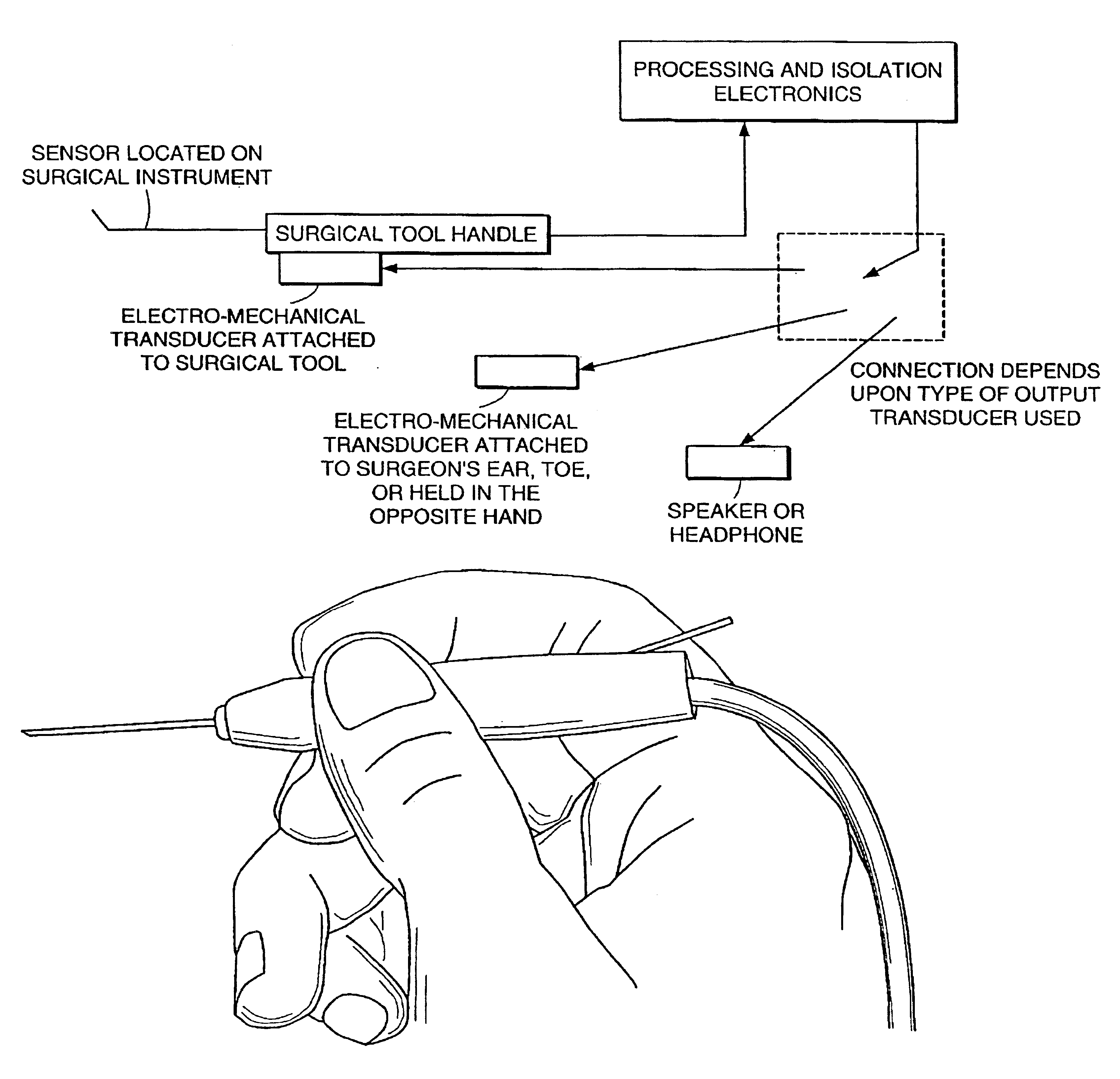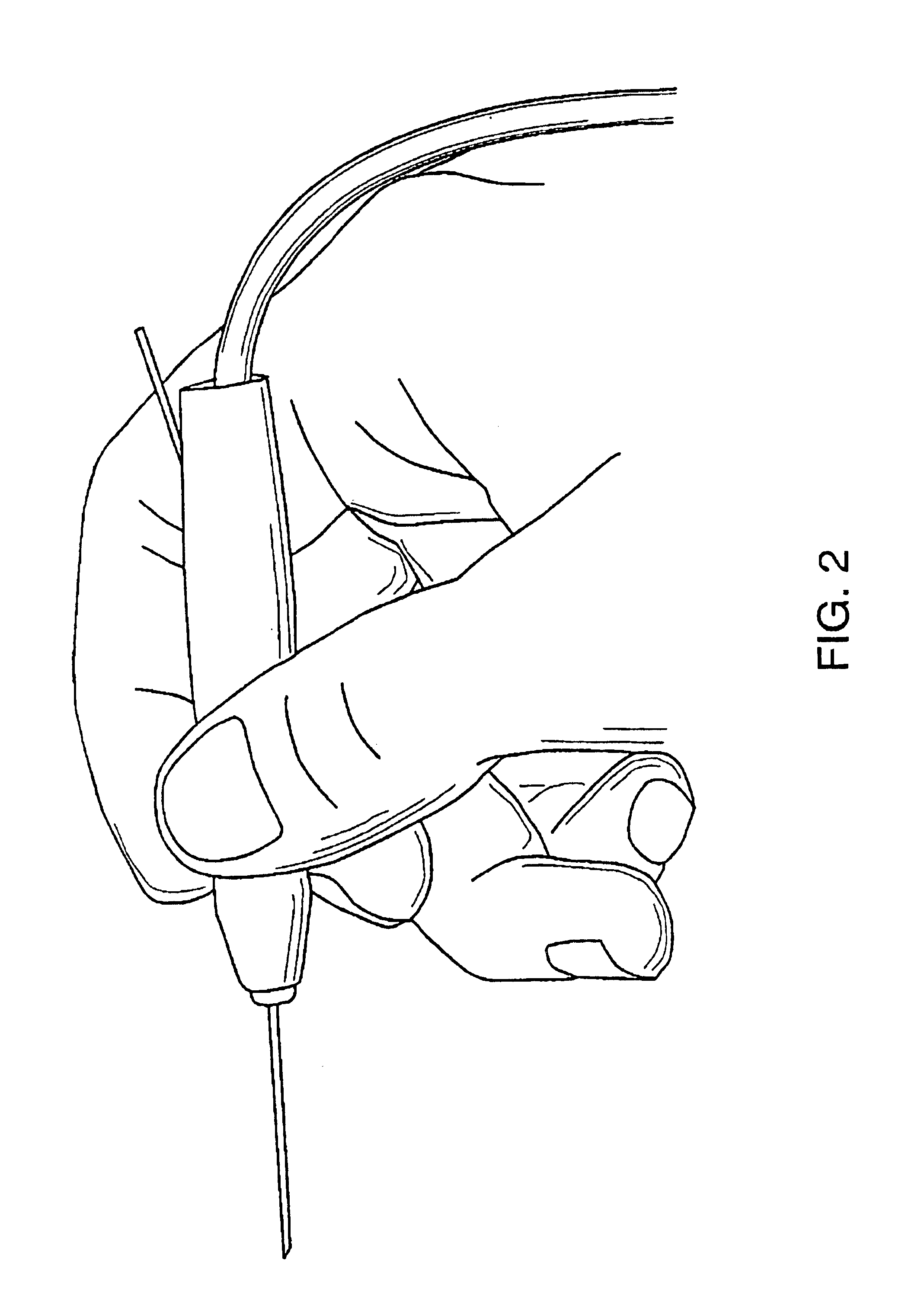Surgical devices and methods of use thereof for enhanced tactile perception
a surgical device and tactile technology, applied in the field of improved surgical devices, can solve the problems of lack of tactile, large force imposed by tissue on the surgical tool during these manipulations, and the inability of the medical practitioner to perceive the force of the surgical tool by the fingertips of the medical practitioner, so as to improve the accuracy and speed of the surgical procedure, performance and speed of the
- Summary
- Abstract
- Description
- Claims
- Application Information
AI Technical Summary
Benefits of technology
Problems solved by technology
Method used
Image
Examples
Embodiment Construction
[0043]Referring now to the various figures of the drawing, wherein like references or characters refer to like parts, there is shown in FIGS. 1-14 various views and embodiments of a surgical devices in accordance with the present invention.
[0044]The surgical device will now be described below with reference to a surgical pick (see FIGS. 1-6). However, it is to be understood that the present invention is not limited to surgical picks, and that any other types of surgical instruments (e.g. probe, needle, cannula) are within the scope of the present invention.
[0045]The surgical device 800 / 900 in the form of a surgical pick includes a handle or hand piece 802 / 902, having a proximal end and a distal end, and a shaft 804 / 904 extending from the distal end of the handle 802 / 902. The shaft 804 / 904 has a proximal end and a distal end 808, see FIGS. 3-6. Surgical picks are well known and, thus, although described below with reference to a preferred embodiment, the general features (e.g. size, ...
PUM
 Login to View More
Login to View More Abstract
Description
Claims
Application Information
 Login to View More
Login to View More - R&D
- Intellectual Property
- Life Sciences
- Materials
- Tech Scout
- Unparalleled Data Quality
- Higher Quality Content
- 60% Fewer Hallucinations
Browse by: Latest US Patents, China's latest patents, Technical Efficacy Thesaurus, Application Domain, Technology Topic, Popular Technical Reports.
© 2025 PatSnap. All rights reserved.Legal|Privacy policy|Modern Slavery Act Transparency Statement|Sitemap|About US| Contact US: help@patsnap.com



